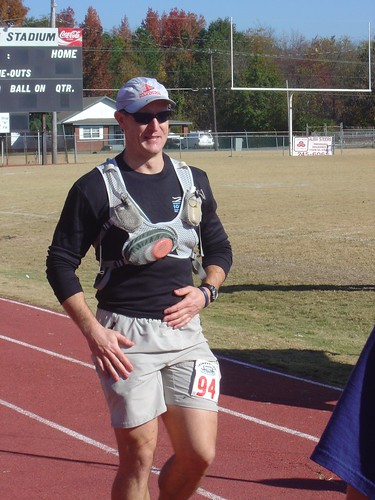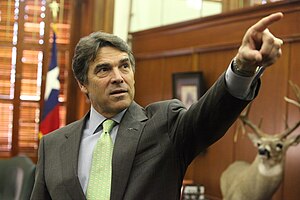 There are admittedly a lot of jokes thrown about on either side of the border. Many hours are spent poking fun at each other. If you are on the north side of the border, you might end your sentences with “eh”. If you are on the south side of the border, you might end your sentences with “hunh”. You might be called a Bubba, or a Hoser, or a Yank, or a Newfie.
There are admittedly a lot of jokes thrown about on either side of the border. Many hours are spent poking fun at each other. If you are on the north side of the border, you might end your sentences with “eh”. If you are on the south side of the border, you might end your sentences with “hunh”. You might be called a Bubba, or a Hoser, or a Yank, or a Newfie.
Canada is inundated with American culture by way of politics, Hollywood celebrities, and reality TV. The US is inundated with Canadian culture by way of hockey players, musicians and comedians. For some reason, Canadians just seem to know how to crack a good joke and make a dollar or two doing so.
Most Americans tend to know very little about their neighbor to the north. You certainly won’t see much Canadian history or geography in high school. Most Canadians have learned a bit about the US, mainly because, well, that’s what you do when Big Brother lives south of the border.
Although the two countries have their fair share of things to disagree on – things like hockey and coffee and health care – they share far more than we might otherwise imagine.
At this point, we are three-quarters of the way through a four part series on an EPIC solution for health care reform. We’ve examined the issues of Evidence, Payment, and Incentives. But there is one absolutely critical pillar remaining – Choice.
Choices, choices, choices. It’s the American way, the way of a free marketplace. In order for any competitive market place to be effective, consumers must be able to find the best product for the best price, or the best product for the best outcome. They also need to have the decision-making capacity in order to select their desired product.
This should extend not only to purchasing a car or a house. It should be a foundation upon which health care is built.
In the US, you have countless choices for everything in life – except for health care. So how do we provide choices?
 Two of the more extreme endurance events are Ironman Hawaii in Kona, HI – the Ironman World Championship – and the Western States 100 Mile Endurance Run in Auburn, CA. One has you swimming, cycling, and running 140.6 miles on the lava fields of the Big Island, the home of the first Ironman triathlon. The other has you running 100 miles - with 18,090 feet of ascent and 22,970 feet of descent - on the original trails used by gold and silver miners of the 1850s. Both have long, storied traditions. Either one could be considered the most demanding single day event, the “Big Dance”, in their respective sport. Athletes covet the opportunity to experience either of them simply because of their illustrious history and daunting challenges.
Two of the more extreme endurance events are Ironman Hawaii in Kona, HI – the Ironman World Championship – and the Western States 100 Mile Endurance Run in Auburn, CA. One has you swimming, cycling, and running 140.6 miles on the lava fields of the Big Island, the home of the first Ironman triathlon. The other has you running 100 miles - with 18,090 feet of ascent and 22,970 feet of descent - on the original trails used by gold and silver miners of the 1850s. Both have long, storied traditions. Either one could be considered the most demanding single day event, the “Big Dance”, in their respective sport. Athletes covet the opportunity to experience either of them simply because of their illustrious history and daunting challenges.
But it is more than just the challenge involved. Events like these bring with them a purity and simplicity, a back-to-the-essence-of-the-sport vibe. They are surreal to some, and tantalizing to others. And they have a deeper inner meaning to many.
I have coached athletes in both events. I have heard countless reasons for taking on these adventures. As an Ironman triathlon finisher myself, one thing has become crystal clear: there are a number of life lessons that can be learned through sport in general, and through endurance sports such as these in particular. Sport does, in fact, become a metaphor for life.
 We are now halfway through a four part series that provides an EPIC solution to health care reform. Thus far, the series has discussed the first two pillars: Evidence and Payment.
We are now halfway through a four part series that provides an EPIC solution to health care reform. Thus far, the series has discussed the first two pillars: Evidence and Payment.
Many people have theorized that if universal health coverage makes an appearance in this country, then the level of care and ingenuity of providers (i.e. the brain-trust behind health care) will diminish. Would the brightest minds move away from a career in health care? I would suggest that the answer is “no”. Entry level requirements in many health care provider educational programs are higher now than they were 20 years ago, and I don’t foresee that changing just because we change our reimbursement structure. In fact, I would project exactly the opposite.
Why? Because of the “I” in our EPIC solution: Incentives. Changing the incentives will actually promote having the brightest minds using the best techniques to then earn a healthy living doing what they do best.
In Part 2, I mentioned that part of the problem with our current health care delivery and payment model is that it is built around the wrong incentives. Providers are reimbursed by the number of procedures performed, not by the outcome or concordance with clinical guidelines. Patients are seeking health care, and not disease prevention or health promotion. These factors promote the wrong incentives - by definition.
 In Part 1 of this series, I presented the first pillar of an EPIC solution for health care reform: Evidence. In short, the application of science-based approaches of assessment and treatment would decrease costs and improve outcomes.
In Part 1 of this series, I presented the first pillar of an EPIC solution for health care reform: Evidence. In short, the application of science-based approaches of assessment and treatment would decrease costs and improve outcomes.
The US is spending a lot of money to insure fewer people and provide less adequate care. Our current system of health insurance is based on a pooled risk. The insurance company effectively rations care simply by making the decision to pay or not, based on the risk factor involved. Don’t forget: the insurance company is doing whatever it can to minimize payments because, imagine this, they are a business trying to make money. We shouldn’t necessarily hold that against them.
What people want their health insurance to do – and what it is actually designed to do – are two different things. If you have auto insurance, for example, you don’t expect it to pay for the maintenance of your vehicle, do you? You would only utilize it in catastrophic situations. There is nothing wrong with that thinking – but a pooled risk system isn’t designed very effectively for the health care world. So let’s build it a little differently from the ground up.
 There are some news items that will leave you shaking your head. Sometimes it is in disbelief. It could be the passing of a celebrity. It could be about a person that does something that makes you say “what were they thinking?”. Welcome to Weiner-Gate.
There are some news items that will leave you shaking your head. Sometimes it is in disbelief. It could be the passing of a celebrity. It could be about a person that does something that makes you say “what were they thinking?”. Welcome to Weiner-Gate.
And this is what brings me to Episode 17 of the Ruminations. Here are some random, assorted news items that had me shaking my head this past couple of weeks.
1. All I need to say is “Governor Rick Perry” and you probably already know why I am in disbelief. The Governor of the great state of Texas seems to be faced with a tough challenge these days. Is he running for President – or isn’t he?
He spent the last week on the road like a travelling road show. Maybe it was more like a circus than anything else. Perry appeared just about anywhere that people were gaga (and I don’t mean Lady Gaga) about his far right conservatism, including an appearance at the Republican Leadership Conference. There was a lot of ego stroking going on.
Meanwhile, back at the ranch, Perry had over 1,000 bills sitting on his desk, awaiting his attention before Sunday.
 Health care reform has become a red hot topic that has inspired the wrath of Republicans and Democrats alike. Both groups, much like Nero, are playing the fiddle as Rome burns and health care costs skyrocket. Some have gone so far as to say that health care reform may even be unconstitutional. As the debate is waged, facts are lost in the vitriol and diatribe.
Health care reform has become a red hot topic that has inspired the wrath of Republicans and Democrats alike. Both groups, much like Nero, are playing the fiddle as Rome burns and health care costs skyrocket. Some have gone so far as to say that health care reform may even be unconstitutional. As the debate is waged, facts are lost in the vitriol and diatribe.
One fact that everyone agrees on is the cost of health care in this country. We are currently spending 17% of our GDP annually to pay for health care. Projections are close to 20% over the next decade. That is not something that can be maintained. Simple. Rome is burning and needs a fire extinguisher, and a big one at that.
As Einstein once said, we cannot solve problems using the same thinking that we used to develop them in the first place. And this becomes all the more apparent in health care.
This four part series is about exactly that – solutions to the health care woes in this country. It will require an EPIC solution for an epic problem.
 "Running Injuries: Etiology And Recovery- Based Treatment" (co-author Bridget Clark, PT) appears in the third edition and fourth editions of "Clinical Orthopaedic Rehabilitation: A Team Approach" by Charles Giangarra, MD and Robert C. Manske, PT.
"Running Injuries: Etiology And Recovery- Based Treatment" (co-author Bridget Clark, PT) appears in the third edition and fourth editions of "Clinical Orthopaedic Rehabilitation: A Team Approach" by Charles Giangarra, MD and Robert C. Manske, PT.
 Allan Besselink, PT, DPT, Ph.D., Dip.MDT has a unique voice in the world of sports, education, and health care. Read more about Allan here.
Allan Besselink, PT, DPT, Ph.D., Dip.MDT has a unique voice in the world of sports, education, and health care. Read more about Allan here.
 Top 5 finalist in three categories: "Best Overall Blog", "Best PT Blog" and "Best Advocacy Blog".
Top 5 finalist in three categories: "Best Overall Blog", "Best PT Blog" and "Best Advocacy Blog".